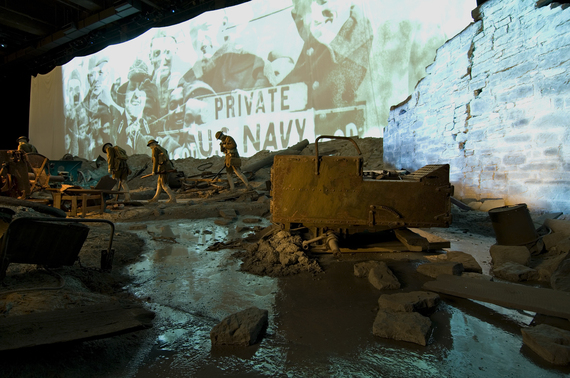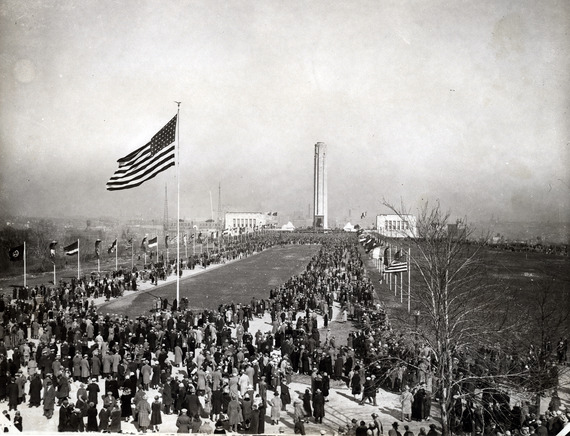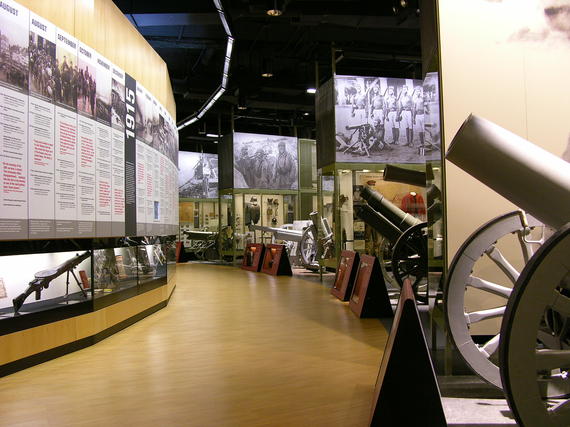Long before it was ever called Veterans Day, the annual holiday in honor of America's armed forces was known as Armistice Day. Taking effect on the "11th hour, of the 11th day, of the 11th month" of 1918, the event signaled an official end to hostilities on the Western Front of World War I.
Today you can learn that story -- and that of the entire global conflict whose effects are still being felt in parts of the world -- at America's only National World War I Museum. This massive storing house of artifacts and stories isn't in Washington, D.C., either.
Instead you'll have to head to America's heartland city of Kansas City, Mo., to find the memorial and accompanying museum, which is second only to London's Imperial War Museums as having the most WWI-related artifacts in the world.
With 2014 marking the 100th anniversary of World War I's start, the museum has taken on extra significance. But, why exactly, is a national WWI memorial and museum in Kansas City, anyway?
Simply put, Kansas City got there first.
"The story is simple," says the museum's president and CEO, Dr. Matthew Naylor, an Australian expat whose grandfather served in WWI. "It was a grassroots effort, of people gathering around a common mission, to do something great following the founding catastrophe of the 20th century," he says.
That effort began on Nov. 9, 1918, when the Kansas City Journal ran an editorial, "Lest We Forget," calling for a memorial to be built in memory of the 116,000 U.S. soldiers who died in WWI. Written just two days before the Armistice officially ended the Great War, the op-ed galvanized 83,000 Kansas City residents -- nearly a third of the city's population at the time -- to raise $2.5 million (roughly $40 million, in today's money) in just 10 days.
When Liberty Memorial, a towering 217-foot-tall structure was finally unveiled in 1926 (all just a stone's throw from Kansas City's Union Station, which had seen 60 percent of WWI soldiers pass through its doors), the event attracted President Calvin Coolidge to speak before a crowd of more than 150,000 people -- the largest audience that any U.S. president had spoken to up until that point.
Today visitors can tour not only Liberty Memorial, from which all corners of Kansas City can be viewed from the memorial's top; but just below it, an 80,000-square-foot exhibition space -- home to more than 150,000 artifacts, the vast majority of them donated -- that Congress designated as the National World War I Museum in 2004.
The museum, designed by the same firm behind the United States Holocaust Memorial Museum in Washington, D.C., officially opened its doors in December 2006.
Upon entry, visitors traverse a glass bridge; right below your feet are 9,000 red poppies -- each of these flowers, which grew especially lush and red after fierce fighting on the fields of Flanders, represents the 9 million soldiers from all countries who died in the Great War. (This same type of flower also makes up the compelling display outside the Tower of London this year.)
If the only thing you know about World War I is that it had something to do with the assassination of Archduke Ferdinand, you'll get a clearer picture once you view the museum's first offering: a powerful 20-minute documentary that unpacks the intricate web of treaties in place before the duke's assassination and how his murder by a Serb nationalist set off a chain reaction that would soon involve 7 empires and some 30 nations, along with the deaths, on any given day, of 6,000 men, over the next four years of war.
Guiding visitors through the various exhibitions, which weave along a circular design, are volunteers like David Holmquist. Like the museum's CEO, Holmquist's grandfather served in WWI. That connection informs his interest in the conflict and the intriguing details he imparts, like Teddy Roosevelt's son, Quentin, who was given full military honors by the German military after he was shot down behind enemy lines.
Just why this war should matter, a century later, becomes clear at the museum's final exhibit, showing a map of the postwar world and the haphazard redrawing of boundaries that followed.
The decades to come would see the War to End All Wars eclipsed by greater conflicts, and in 1954, Armistice Day was renamed Veterans Day. The Kansas City memorial, and its accompanying museum, aims to do what was started long ago, by 150,000 Kansas City residents: to honor those who served and died in the 20th century's first great conflict, so we can better understand all those that follow.
Take a tour of the National World War I Museum's most memorable artifacts.




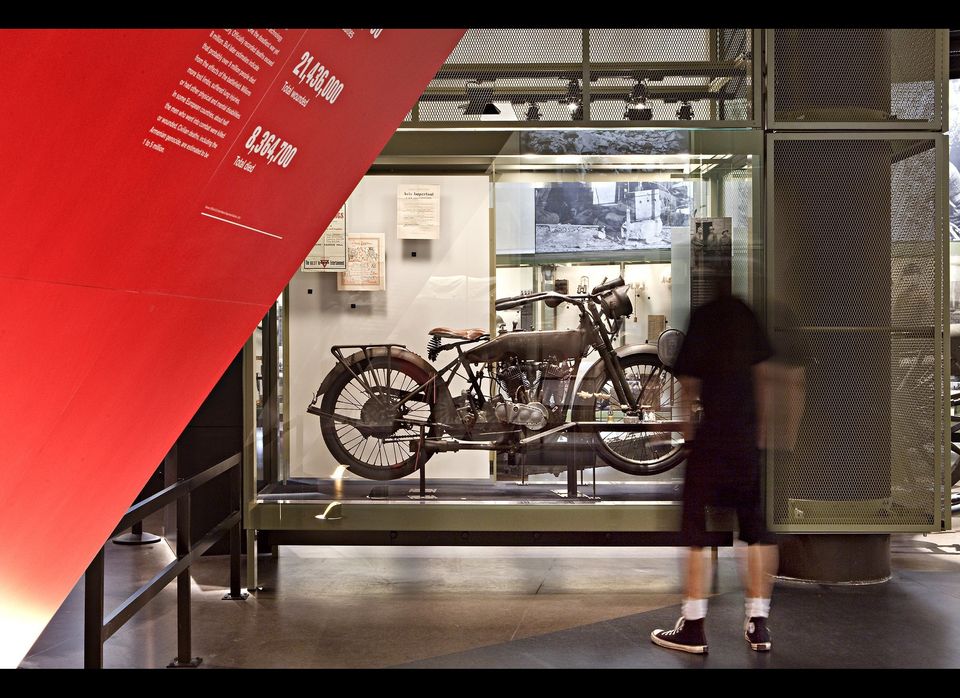
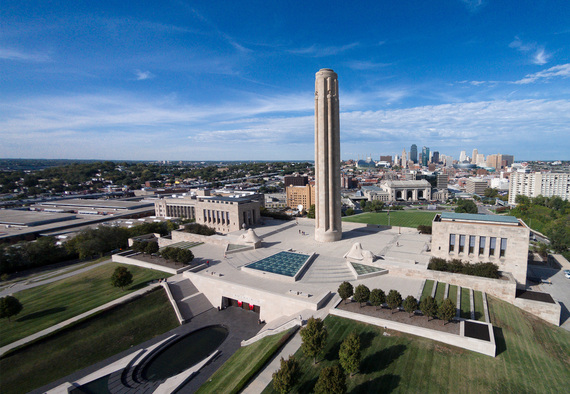 (All photos courtesy: National World War I Museum)
(All photos courtesy: National World War I Museum)